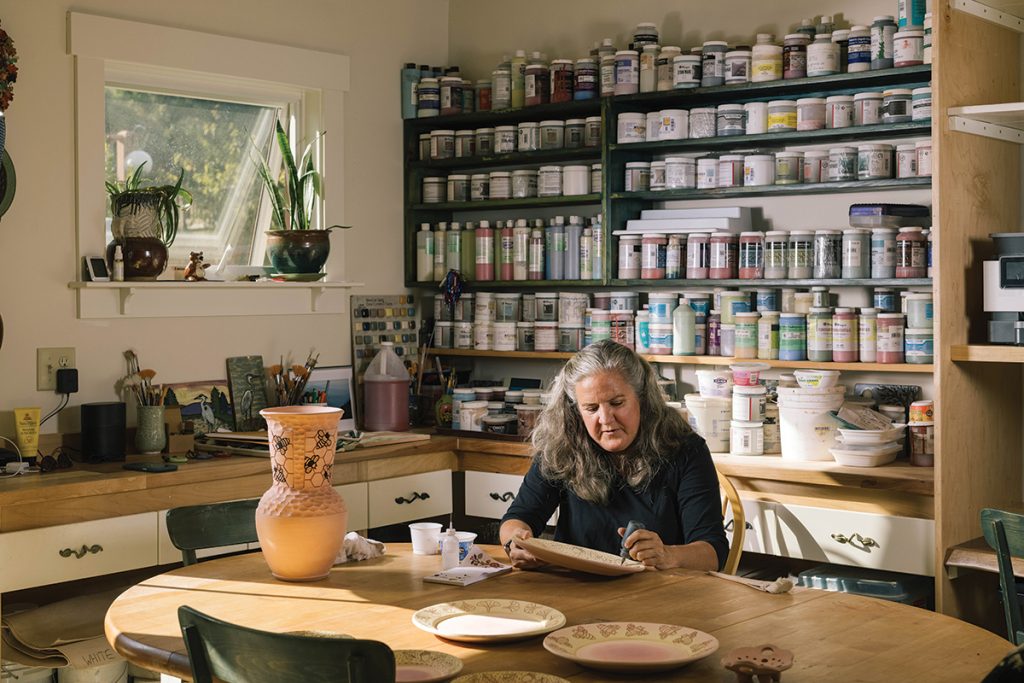
Potter Julie Calhoun-Roepnack has a hungry fan base when it comes to her one-off honeybee-themed vessels, including mugs, vases, and small dishes.
Photo by Evan Anderson
“Sometimes I almost have to hide my new work so people won’t buy it,” admits potter Julie Calhoun-Roepnack, a member of the prestigious Southern Highland Craft Guild who goes by the initials JCR. “Otherwise, a gallery or collector might want more of them, but I have no idea how I made it.” Experience has taught her to hold on to a piece long enough to make a similar one for her archive, lest she forget.
“All of my pieces are one-of-a-kind, of course,” she says. “But for commercial success — one woman, for instance, ordered 24 of my honeybee mugs — consistency is important.”
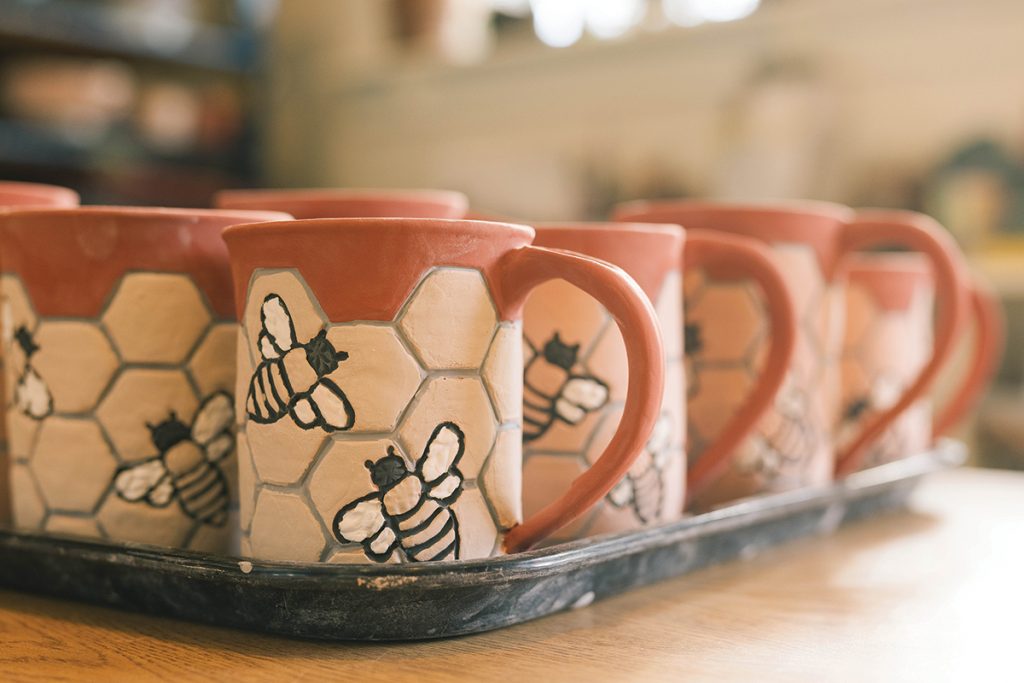
Hers is a deliberately painstaking process, but one she embraces with determined enthusiasm to achieve the results she wants. “I do wheel throwing and hand building, and my tiles are all individually hand cut, hand carved, hand glazed, and twice fired.”
For her unique, much-sought-after wreaths — assembled with hundreds of small, painted ceramic shapes, usually flora and fauna — JCR needs her assistant. “We cut the shapes out by hand, and each individual piece is hand painted with glazes and underglazes. Then we put them together using copper wire, which develops a beautiful patina. It’s an awful lot of work, and I’m not sure I can justify it. But I think you need to balance production with work that actually brings you joy.”
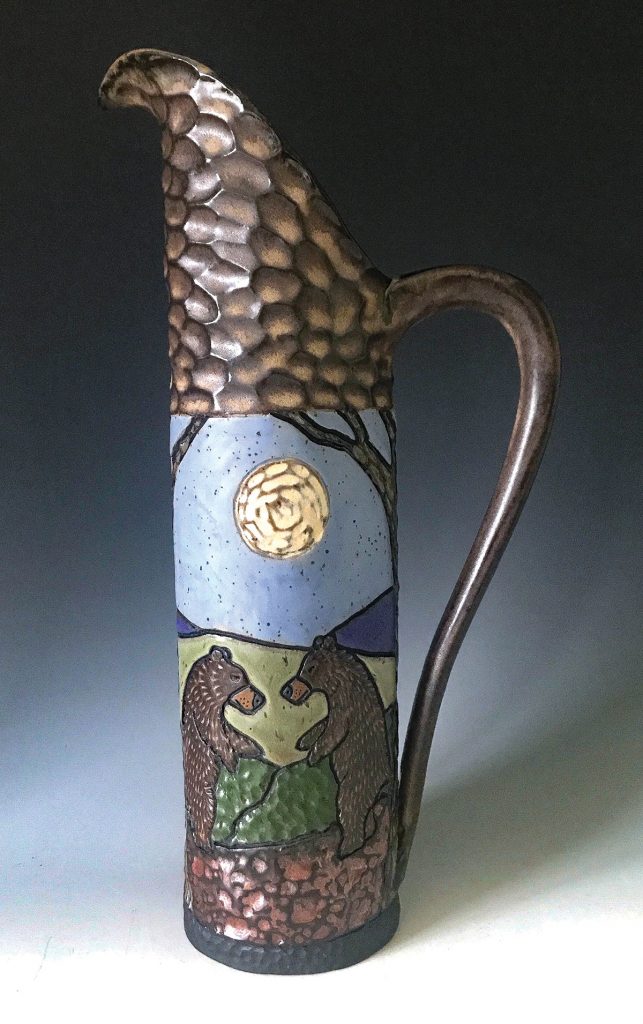
She also derives joy from black bears and honeybees, which appear on many of her pieces. The bears are inspired from real life — “actual experiences of black-bear situations” — since they often appear in her driveway. She also creates commissioned pieces that incorporate portraits of customers’ pets on mugs. The artist adds to the complexity of her process by firing her pieces at “cone six,” or approximately 2,200 degrees Fahrenheit.
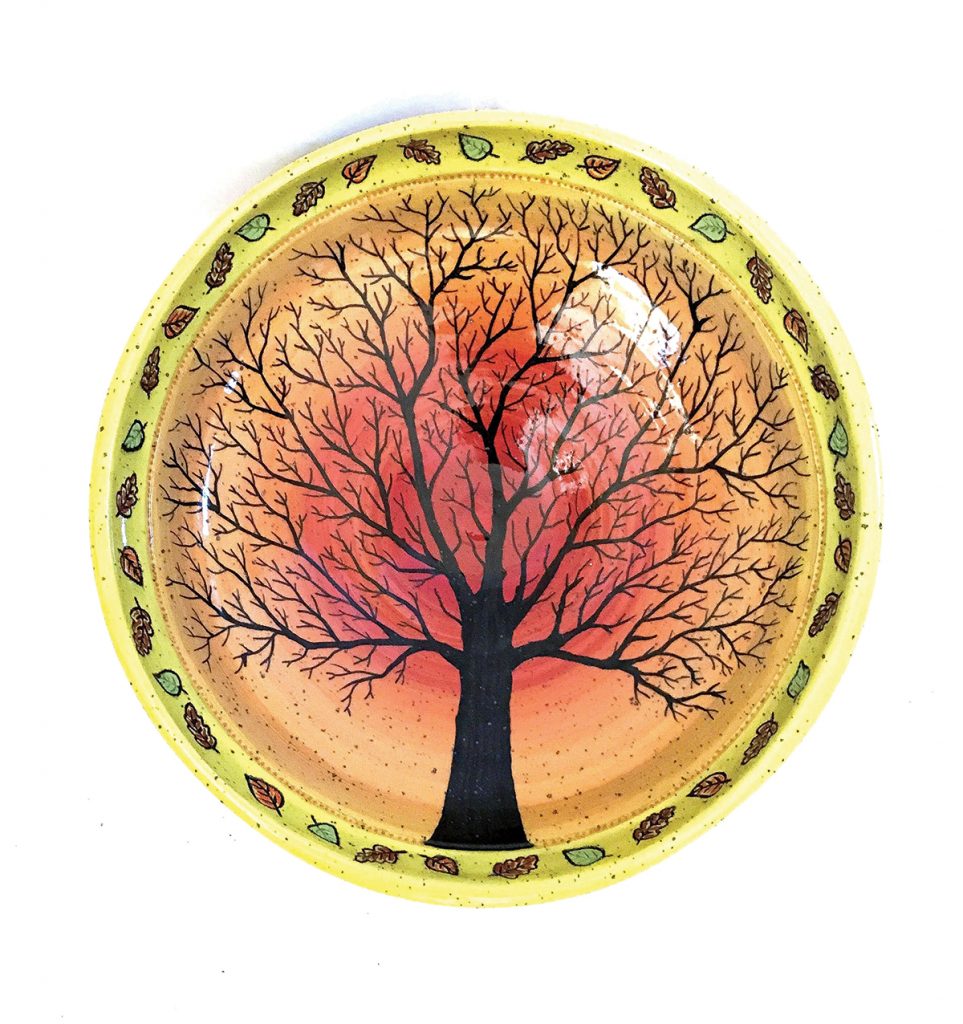
That’s hot enough to melt the windows right off of a house — and glazes at that temperature form a glasslike bond with the clay, making the pottery exceptionally strong and durable. That elevates pottery from the category of relatively fragile earthenware to that of hard-as-rock stoneware.
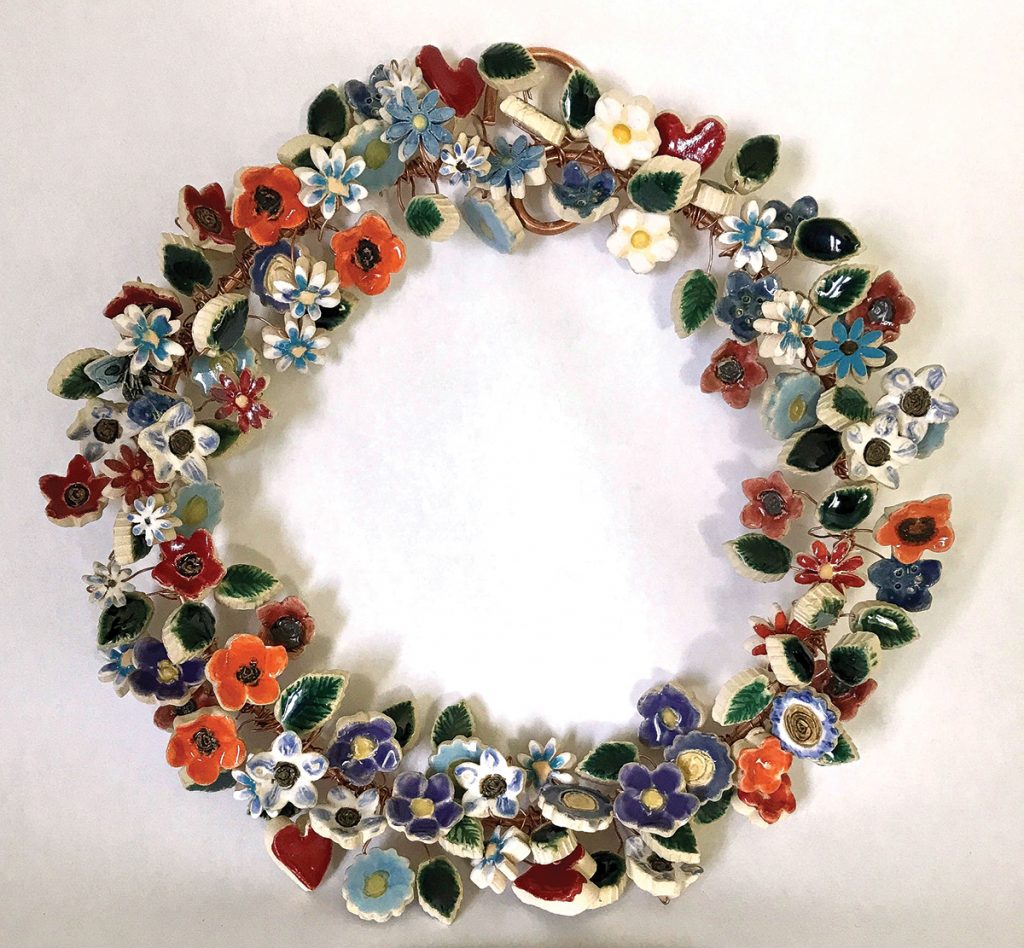
The potter acknowledges that her difficult approach isn’t for everyone. “The reason more [ceramic artists] don’t do this kind of work is because it’s a pain to get compatible glazes at cone six.” (Glazes with incompatible chemical compositions can blister, bubble, and crack at cone six, ruining the pieces.)
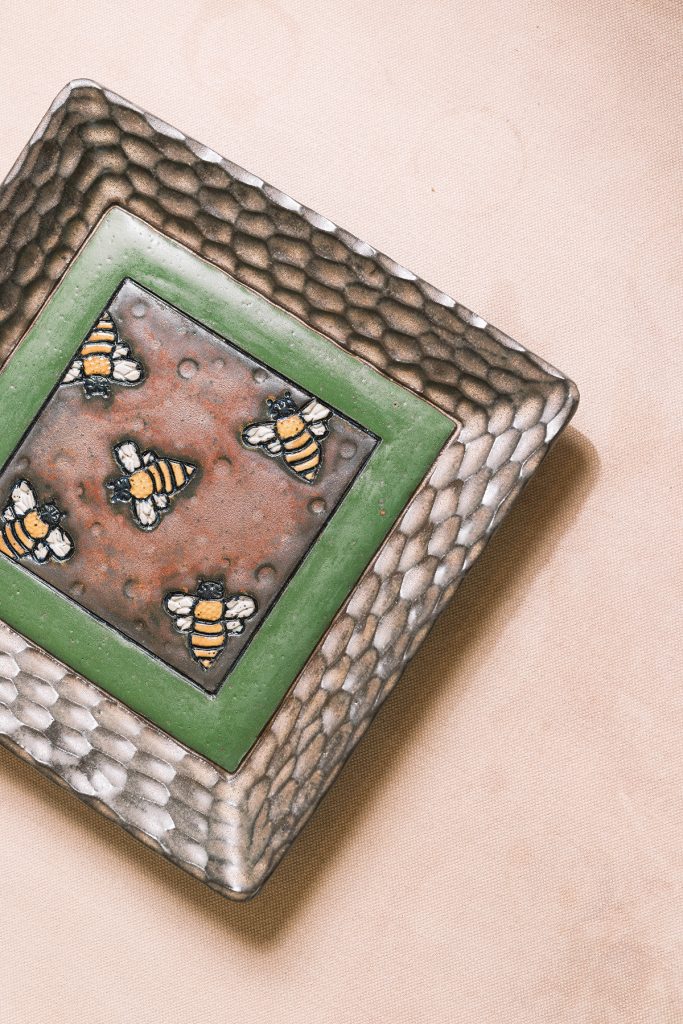
“Matte and satin give me the most grief,” she says. “But with some of my palettes I like to mix matte, satin, and shiny for a textural feast.” She’s currently experimenting with ombré patterns: gradations in color that may range, for instance, from red to orange to yellow, or from blue to green to gray.
“It’s very labor intensive — but it’s nice to have a stylistic approach that stands out.”
Julie Calhoun-Roepnack, JCR Designs, North Asheville. Roepnack is represented by Gallery of the Mountains at Asheville’s Omni Grove Park Inn (galleryofthemountains.com); Woolworth Walk in downtown Asheville (25 Haywood St., woolworthwalk.com); Twigs & Leaves Gallery in Waynesville (98 North Main St., twigsandleaves.com); Firefly Craft Gallery in Flat Rock (2689 Greenville Hwy., fireflycraftgallery.com); and the Southern Highland Craft Guild shops at Biltmore Village, Moses Cone Manor, and online (southernhighlandguild.org). For more information about the artist, see jcrdesigns.net, JCR Designs on Facebook, and @calhounroepnack on Instagram.
I enjoyed participating and reading this article, and viewing the pictures. Your production crew is marvelous, many thanks to everyone who helped with this.
There are 2 photos that are mislabeled in both the online and paper copies of the article and it’s pretty obvious, the Fall Ombré Tree Bowl should be below the bowl image and the Bee Squared Platter should be titled below the final image which is a square Platter.
Because of your efforts, I will consider advertising in your fine local publication down the road.
Warm regards,
Julie Calhoun-Roepnack
JCR Designs
http://www.JCR Designs.net